When an artist asks how much trouble she can cause with a needle and thread, you can bet there’s a revolution at hand.
Winnie van der Rijn is driven by a wild curiosity, and her inquisitive and spirited energy has taken her through a number of careers. Today, she creates statement art intended to elevate the value of women in society.
Her work reflects on her experiences of growing up in a military family, her left-wing education and her feminist views, while satisfying an unending passion for art making.
With a vigour and determination that’s not for the faint-hearted, works like What Are You Looking at? and Anatomy of the Patriarchy make statements that are crystal clear – there must be gender equality. And the tactility and structure of cloth make textile art the perfect medium to show the way.
So, how does Winnie’s art reflect the importance of women’s value in the world? She exhibits masculine shirts adorned with female breasts, squishy spikes protruding from a man’s shirt, and boxer shorts overlaid with a metallic uterus reminiscent of a Wonder Woman emblem. All are purposefully stitched on her sewing machine conveying a strong feminist attitude.
Has Winnie achieved her aim? One thing is for sure, she won’t rest until her ideas run out. And that’s not likely to happen any time soon.
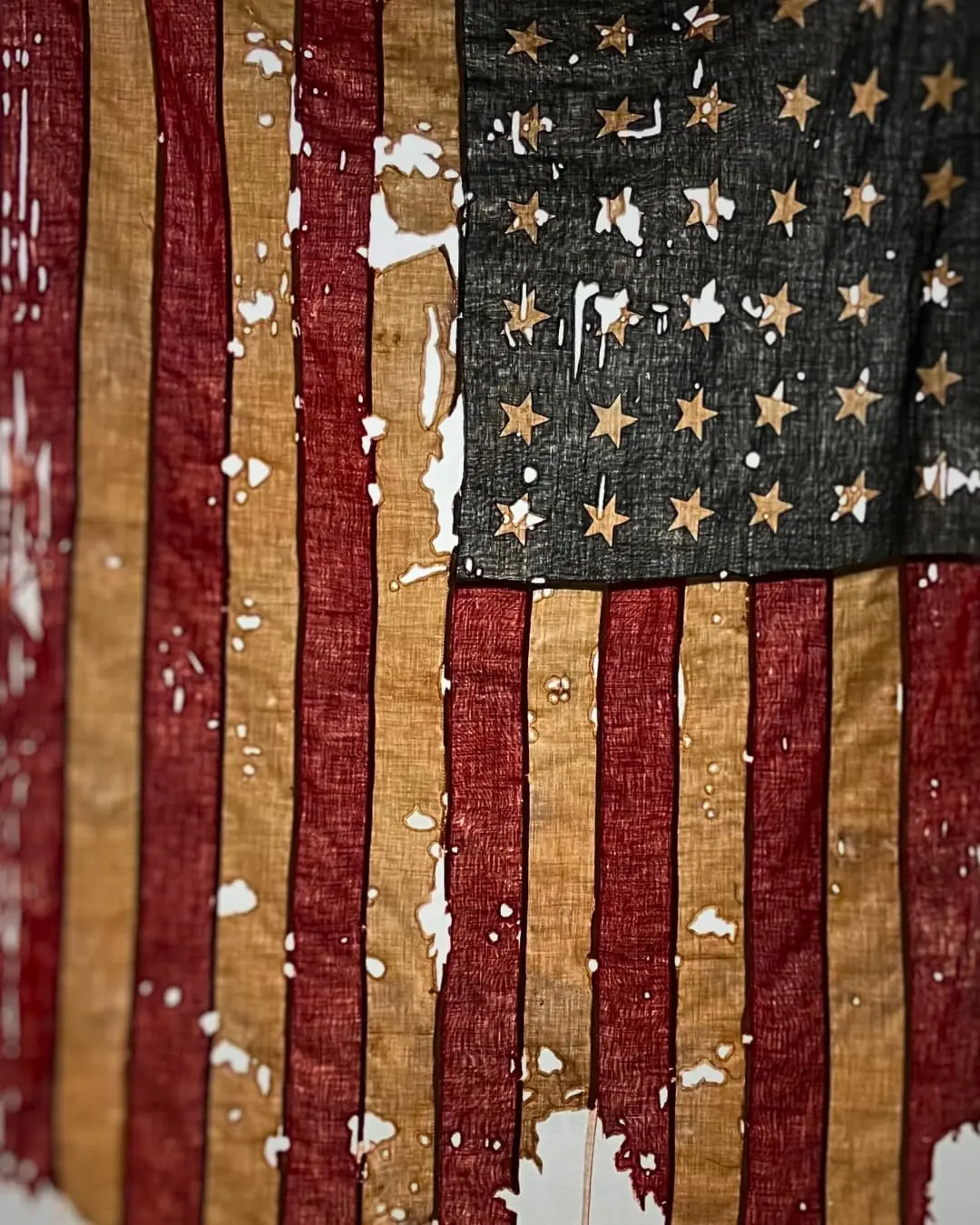
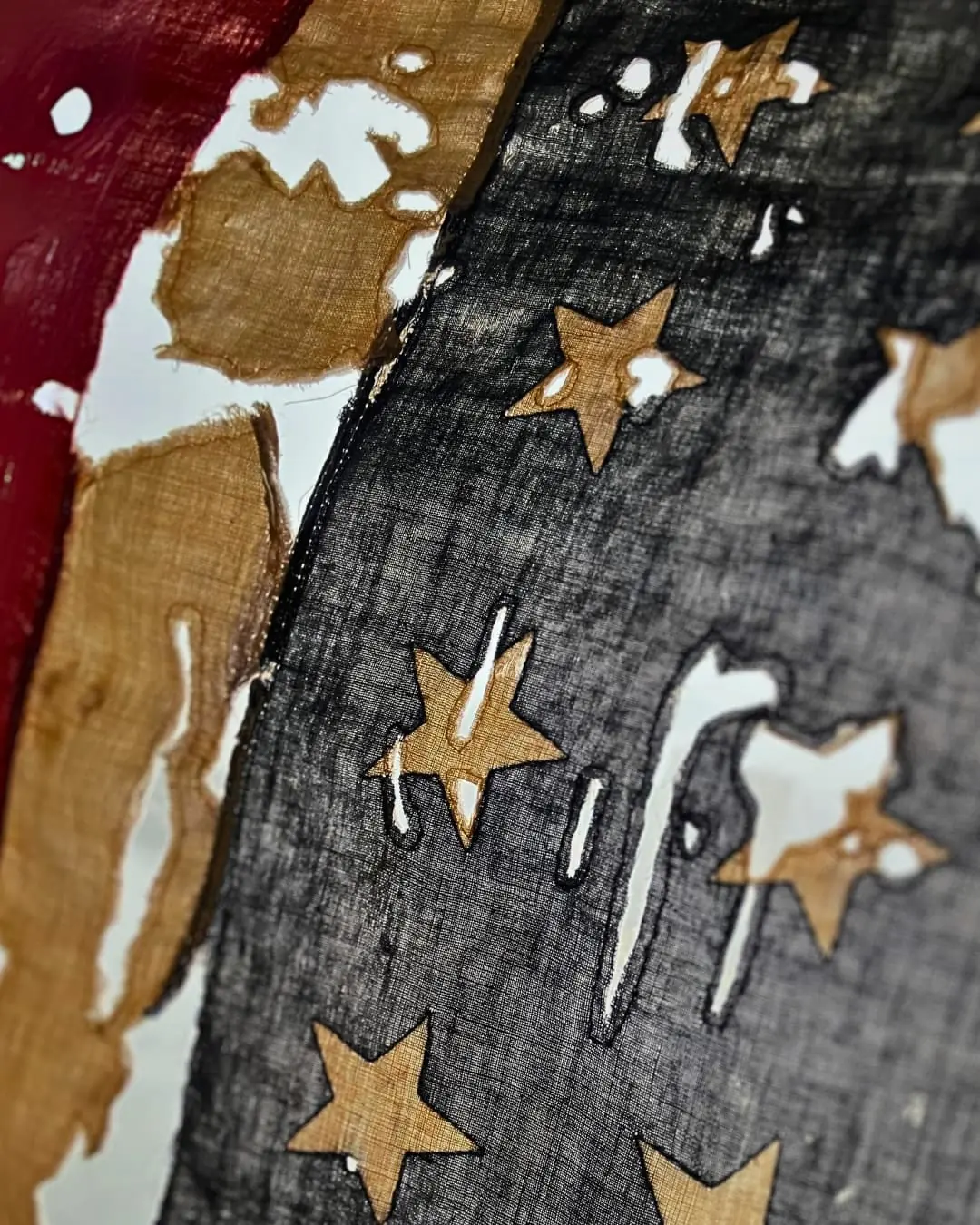
Mending history
Winnie van der Rijn: I’ve always been a maker. I’m a seventh generation Californian from a fairly conservative and traditional military family.
I studied sociology and mass communication at the University of California, Berkeley, and I have a keen interest in Marxist theory and propaganda. I am constantly trying to reconcile my military upbringing with my deeply feminist core and my leftist Berkeley education.
“I’m a textile artist sometimes – a feminist artist primarily – an experimental artist always.”
Winnie van der Rijn, Textile artist
Since moving to the Boston area, which is so steeped in history, in 2022, I’ve been leaning even more into ideas around re-enactment, propaganda, revolution, symbolism and patriotism.
For example, my project How to Mend History, of which my piece Frayed is a part, is an investigation of and engagement with the American flag as a symbol of freedom. I’m repairing, disassembling, rearranging, reimagining, reassembling, examining and questioning. I’m primarily working with wounded, stained and tattered flags.
Each time I rescue a flag I wonder if my job is to heal the wounds or preserve the artefact. What is my responsibility as an artist? As an archivist? As an American? As a military child? To the past? To the future? To the country? To the flag? To freedom? To my father?
The project covers community based interactions and performances through the 2024 election cycle and up to the USA’s 250th birthday in 2026, with the aim of pursuing parts of this project in each of the 13 original colonies.

Curiosity & learning
I keep my work current by constantly learning and adding techniques to my tool belt, through classes and books. Then I blend techniques and materials from different crafts to suit my purpose. I don’t like to limit myself to tradition or rules.
“I’m wildly curious about how things are made and my curiosity can lead to a deep dive into a particular medium.”
Winnie van der Rijn, Textile artist
I’m mostly curious about society and societal structures, about what’s valued and how we, as a society, assign value. I’m curious about what we consider disposable, what we create monuments to and what we memorialise. I’m curious about power and beauty, identity and gender, mending and other radical acts of care in a fractured world – to name but a few.
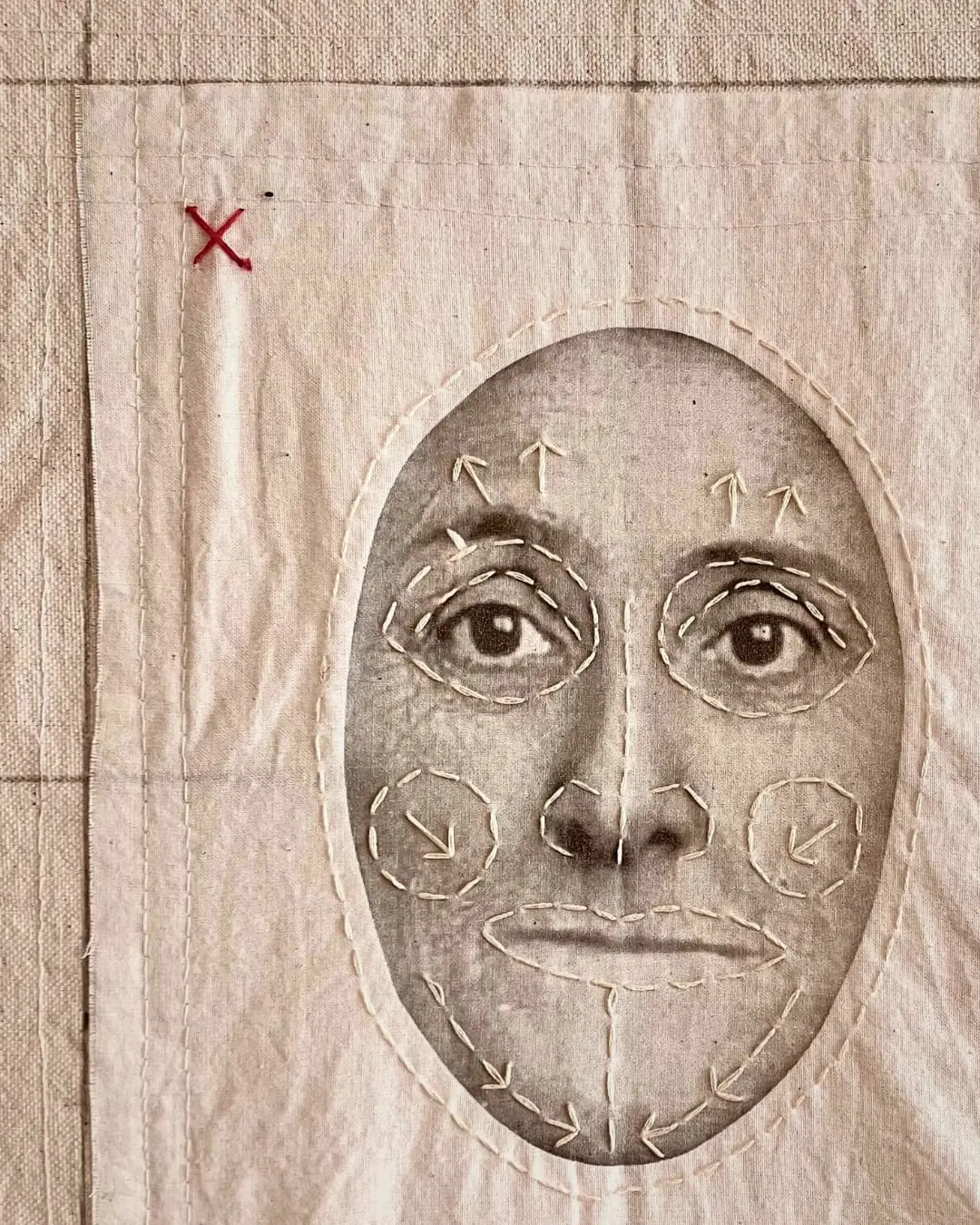
Re-use & repair
One day I woke up and decided to work exclusively with materials that I already had or could scavenge. I saw damage as an opportunity to repair or transform. I became a ‘repurposer’ – an artist of second chances. I was a nose-to-tail artist committed to using all of my own scrap material.
Sometimes I look for items, and sometimes it’s absolutely opportunistic. I literally pick up items off the street, and people who know me offer me old used weird stuff. If I’ve latched onto an idea, I might source used materials from the thrift store, antique markets or the internet.
I have one sewing machine – a very basic Janome HD3000. It’s a workhorse! I use machine stitch and I hand stitch quite a bit too, both for detail and structure depending on what I’m making. Hand stitching gives me much more control.
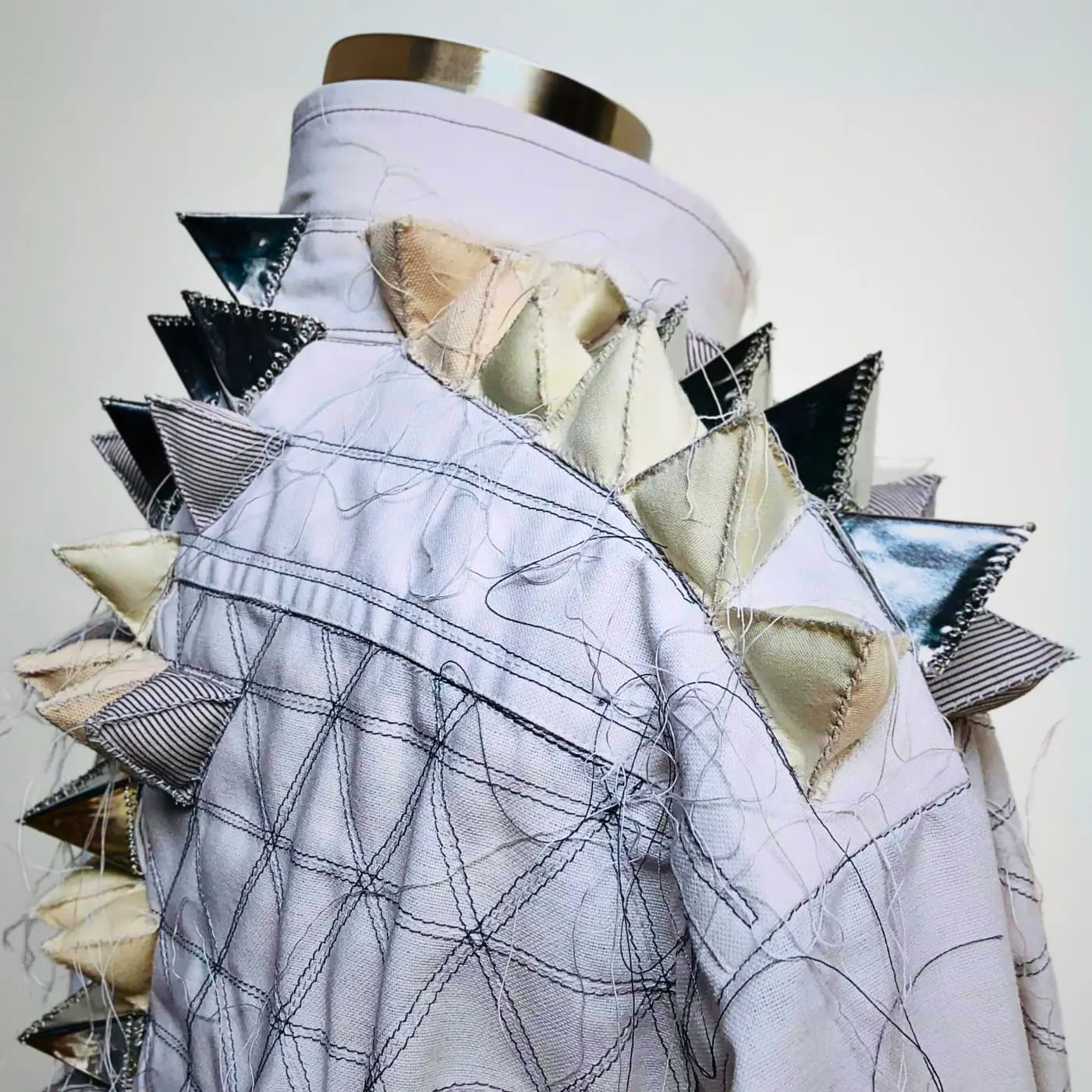
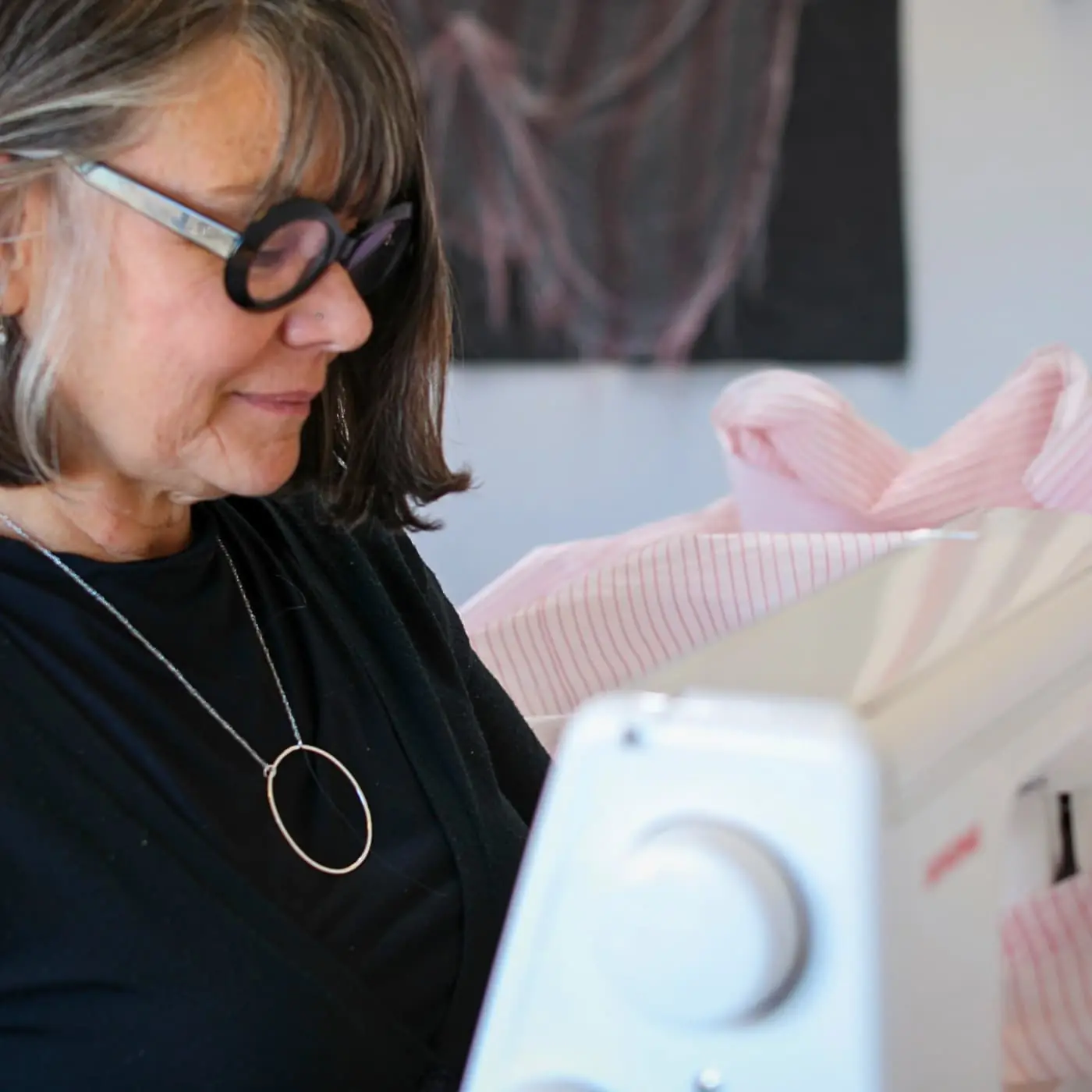
Using what’s accessible
The ideas and materials I have at hand lead to the output, whether that be textiles, sculpture or collage. When I have an idea, I survey my skills and materials and decide how to best express myself and pursue my curiosities.
“I use what’s accessible, I collect materials, acquire and experiment with techniques.”
Winnie van der Rijn, Textile artist
When I was making the Badass Bitch shirt, I made the spikes from excess shirt fabric and very very thin aluminium sheet metal. I created a triangular pyramid pattern and for the fabric spikes I applied an iron on interfacing to give the fabrics more body. I cut, folded, ironed and hand stitched each shape. They’re stuffed with leftover quilt batting.
For the aluminium spikes I used the same pattern, cut and folded the metal, pre-pierced the holes with a needle, and used thin wire to sew them closed. I glued all the spikes to the shirt to set them in place and then reinforced them with hand stitching around their bottom edges.
I created the breasts in What Are You Looking At? by hand stitching annealed steel and shipping straps onto the shirt material and weaving with a thinner steel wire. Then I hand formed the shape, accentuating each breast with underwires from an old bra. The nipples are made from eyelets and grommets, hammered into place.
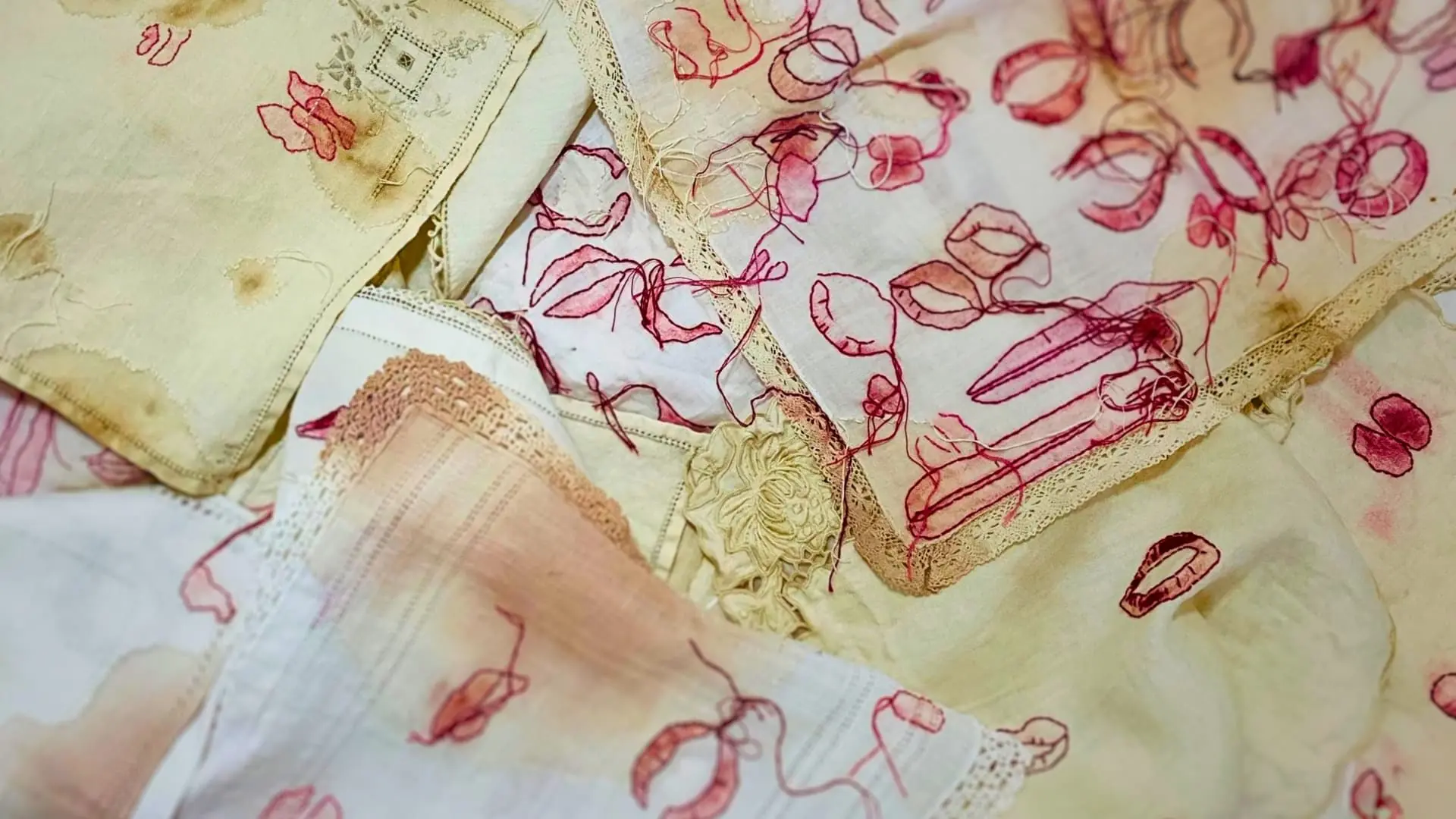
Collaborating for creativity
Collaboration is my favourite thing. I’ve collaborated with art friends, family, fellow artists from a residency cohort, and long distance with artists I’ve met over social media.
It all starts with a conversation. I have this theory that if we talk with people about what we have in common, we can build the trust necessary to show vulnerability and talk about the things we don’t have in common – perhaps a chance to move towards civil discourse.
“I’m much more interested in what we can create together than what I can create in a vacuum.”
Winnie van der Rijn, Textile artist
My ongoing work Gossip Project/Lip Service/Spilling T is bringing me lots of joy because it’s collaborative and multifaceted.
For this project, I invite people to sit with me and talk. We wear matching lipstick and drink staining beverages (coffee, tea or red wine) with the goal of staining the vintage napkins I’ve collected. And we talk about anything and everything.
I choose a few sentences or phrases from each conversation and write them down. Then I take all of these excerpts and compile my text – out of context the phrases read like gossip. Next, I embellish the stains on the napkins with embroidery.
It’s performance, community participation and conversation, plus selective editing, plus embellished lipstick monoprints on vintage napkins.


Building a career
My first job out of college was writing technical manuals for a small computer company. With my first Christmas bonus of $100, I signed up for two classes at the local bead shop.
By the end of the second class, I’d started working at a jewellery store. I wrote their mail order catalogue and started their mail order business. I not only made and sold jewellery retail and wholesale, but I also taught jewellery making around the country. I loved empowering people with creativity. And I got married and had kids – still always making and selling jewellery.
Being wildly curious about how things are made, I took classes anywhere and everywhere I could: wire weaving, mixed media sculpture, alter making, metal smithing, printmaking, exploding picture boxes, woodcarving, sculpture, bookbinding, cold connections, precious metal clay, hat making and shoe making.
My kids’ school leaned heavily on parent participation and I was soon heralded as the ‘art mom’, volunteering in every classroom and making art with the students to sell at fundraising auctions.
We painted rugs, canvases and ceramics, and wrote and illustrated books that were translated into Spanish by a fellow parent and the Spanish class. I volunteered to teach older students creative reuse and jewellery making. I made costumes for dance recitals, Halloween and school musicals.
All the time I was constantly mending, sewing and making – and that still included making and selling jewellery.
I began working for a start-up that held in-home jewellery making parties. I designed jewellery and created kits. I taught people how to teach others how to make jewellery and I helped empower women to start their own businesses.


From jewellery to flags
When my youngest started school, I began to make work about motherhood. When my youngest started high school, and my husband asked me what I wanted to do in the next four years, I decided to set up an art studio outside of the house, at a museum. Once I was settled in there, my jewellery became bigger and more sculptural. Some became wall hangings.
Finally, I started showing and selling work that wasn’t jewellery. When the 2016 election happened, I started to make the alternative American flags out of used clothing.


Deep dive into textiles
When I reached the menopause, I suddenly felt as if I’d become invisible. I’d become ‘unwoman’, I was deemed innocuous (I’m anything but).
And so I decided it was time to take the system down.
I started to do work about beauty and gender. I embroidered make-up onto vintage images and drag queen make-up onto contemporary images of family friends. I applied to do a nine-month textile residency in Brooklyn. When my son went to college, my husband and I moved to New York City.
It was then that I reached my stage of ‘Why Not?’ and did a deep dive into textiles. I took classes in weaving, machine knitting, sashiko stitching, screen printing, dyeing techniques and feminist theory, and collaborated with others in my cohort.
The textile arts centre had a quote on the wall: ‘The job of the artist is to make the revolution irresistible’. I read that quote every day and, as I started to see myself as a revolutionary, I began my work about revolution and power.
I decided to work with materials and techniques that were ubiquitous and accessible to anyone because I wanted to make the revolution both irresistible and accessible.
Patriarchy versus domesticity
Now living in Boston, my mind turned to ideas of patriotism, revolution and re-enactment. The question in my mind wasn’t: ‘Who’s going to let me?’, it was: ‘Who’s going to stop me?’. From 2018 to 2022, I spent all my creative energy actively dismantling the patriarchy.
How to Dismantle the Patriarchy is an examination and deconstruction of the power in menswear. Motivated by the increase in false news, a daughter graduating from college, and my menopausal rage, I decided to conduct an artistic – but completely junk science – examination of the power in menswear.
I dismantled the patriarchy, one shirt at a time.
I pushed forward my narrative that the patriarchal power was in the clothes – then stripped the power away through an iterative intervention. To do this I leaned on my traditionally female, very domestic skills of sewing, weaving and embroidery.
Using subversive stitch as an act of rebellion I created an army of 100 shirts. The shirts were all used – some given to me, most purchased from thrift stores. I treated each shirt differently. I cut, shredded, disassembled, recreated, wove, embroidered, pierced and smocked. I used every idea and every technique I had in my arsenal.
I created a Museum of Natural Consequences to show this work. I considered my practice to be ‘artistic improv’ with a decidedly ‘Yes, and…’ approach.
“By approaching this project with some humour and a bit of absurdity, I hope to spark engagement in this deeply serious subject.”
Winnie van der Rijn, Textile artist
Patriarchy is a power structure that can and must be dismantled. As long as we ignore or passively accept the patriarchal structure there can be no real or lasting change, and no true equality. We must keep ideas of change in the conversation, or it simply won’t happen.
This body of work has shown in various locations including the Textile Arts Center (Brooklyn, New York), Dairy Arts (Boulder, Colorado), Museum of Sonoma County (Santa Rosa, California) and the self-invented Museum of Natural Consequences (New York, NY).

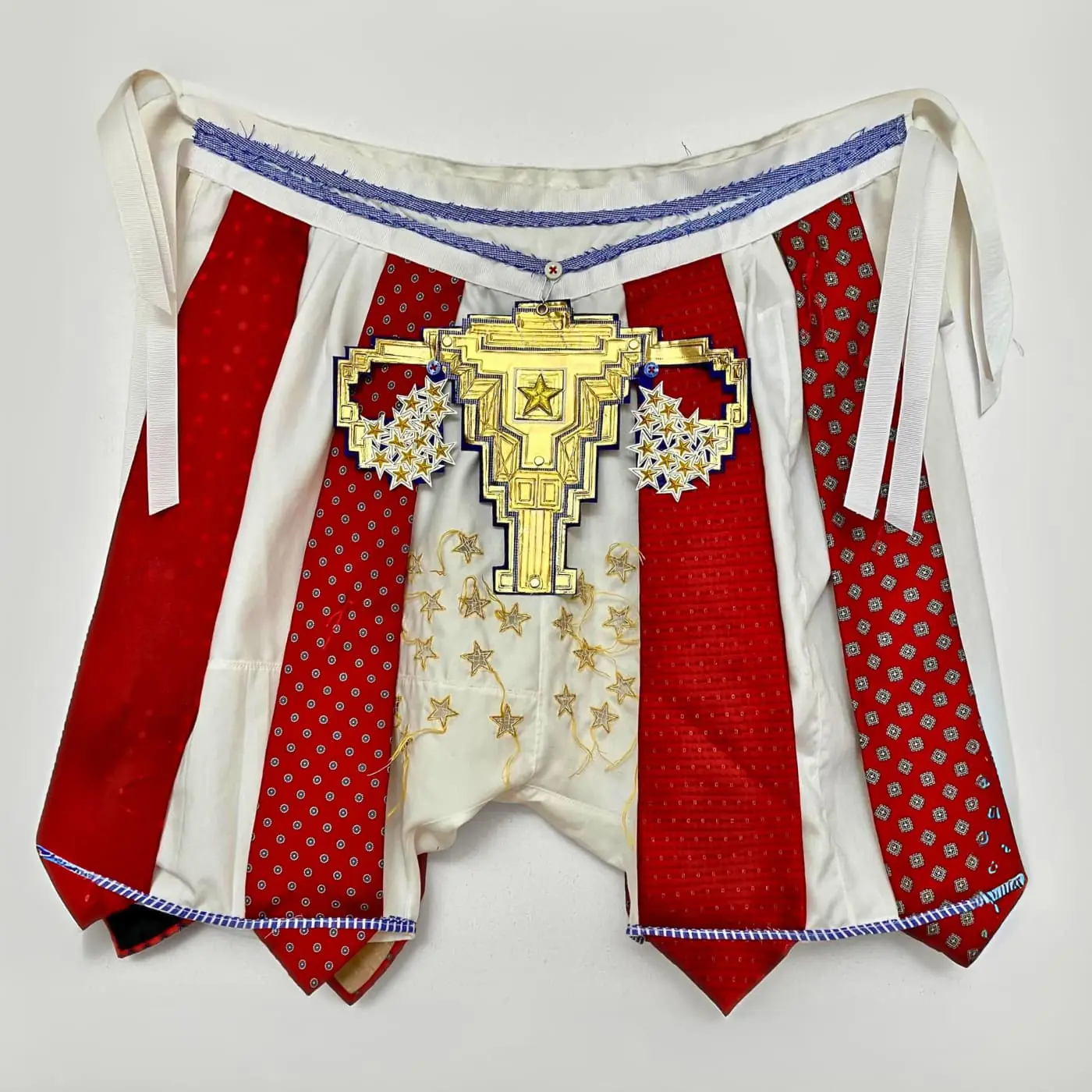
Challenge of time
Time has always been my biggest challenge. When my family was growing, I fitted in my art-making where I could, expressing my creativity in many different ways. Now that I’m an empty nester, I work on my art 30-40 hours a week. I’m just getting started.
But I also need to be quite adaptable and flexible because I’ve been caring for my husband who’s had cancer. So I do what I can when I can. And I use my art to help me process my emotions.
“Every time the world speeds up, I react by slowing down – working more and more with my hands in an attempt to balance the universe.”
Winnie van der Rijn, Textile artist

Know your why
I’d say to any budding textile artist: learn as much as you can, anywhere you can. Know why you’re creating the work. Trust yourself. Get involved in critiques. Talk about your work – and then talk about your work some more. It helps you hone your message.
The best advice I received from a mentor was: ‘If you aren’t failing 50% of the time, you aren’t reaching far enough.’
“I fail regularly and it pushes me forward.”
Winnie van der Rijn, Textile artist

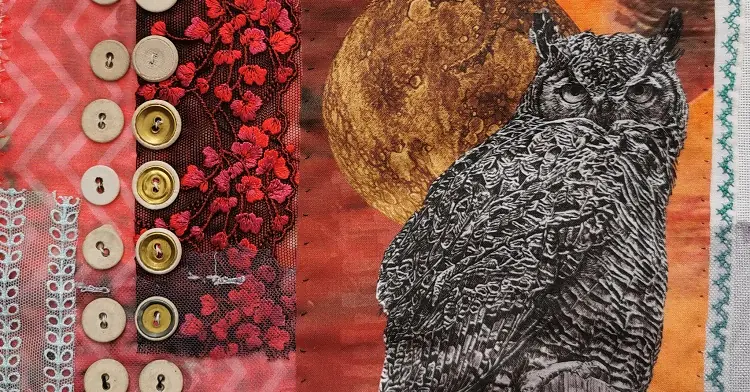
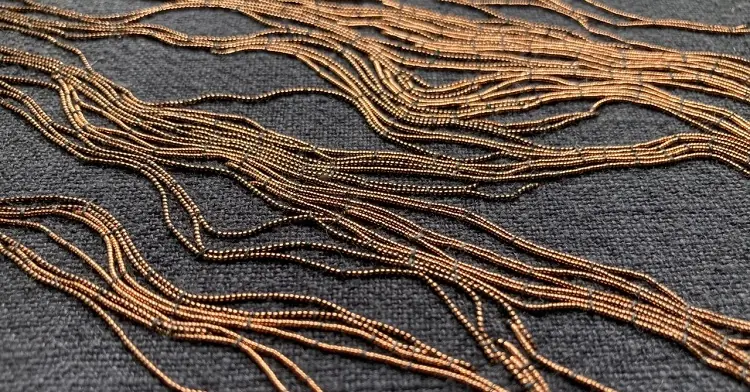
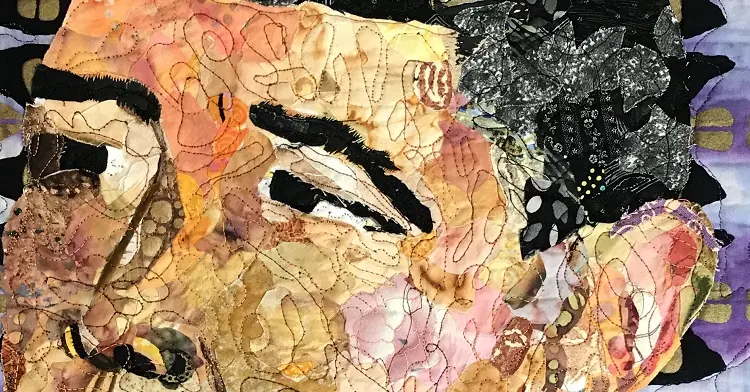
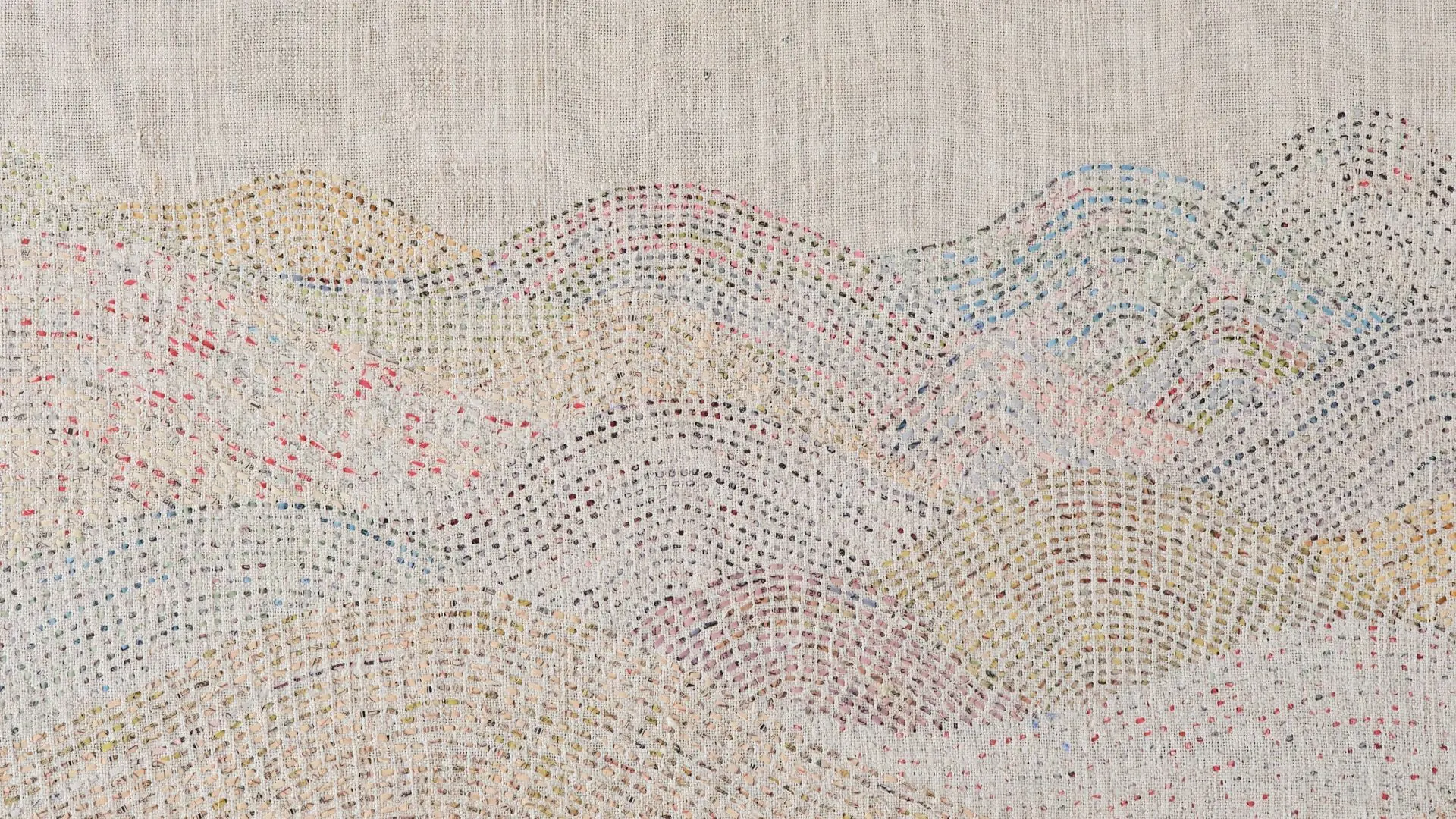
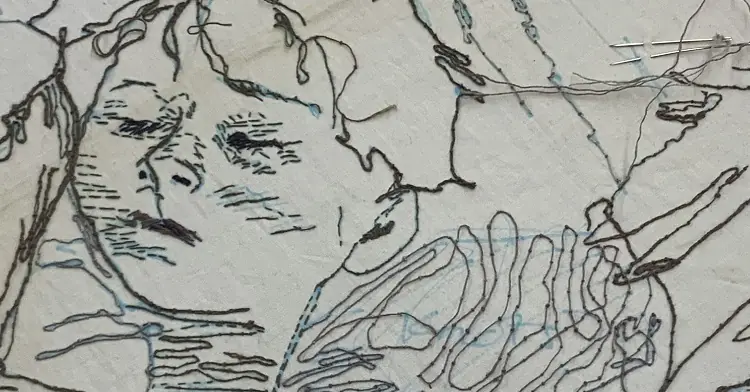
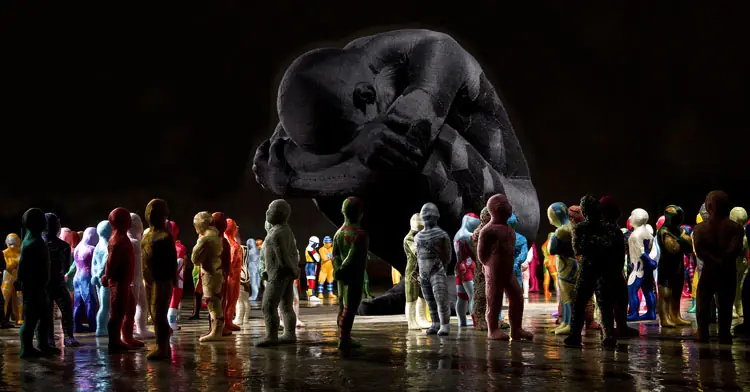
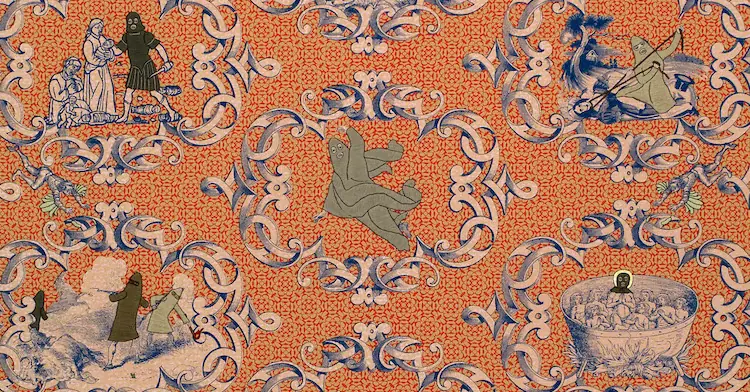
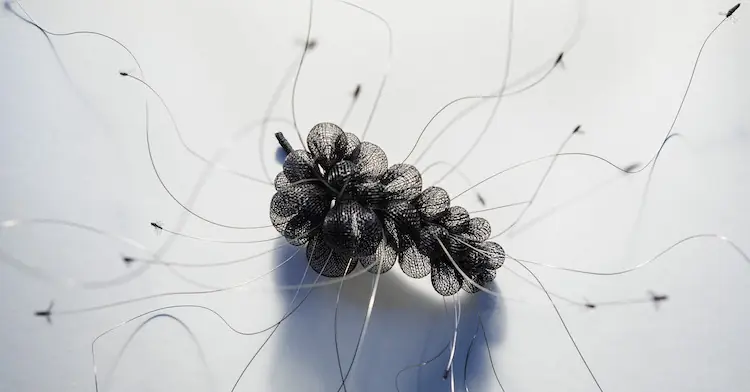
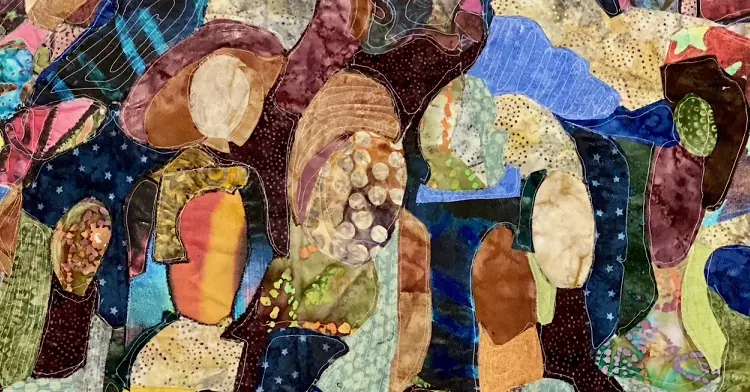
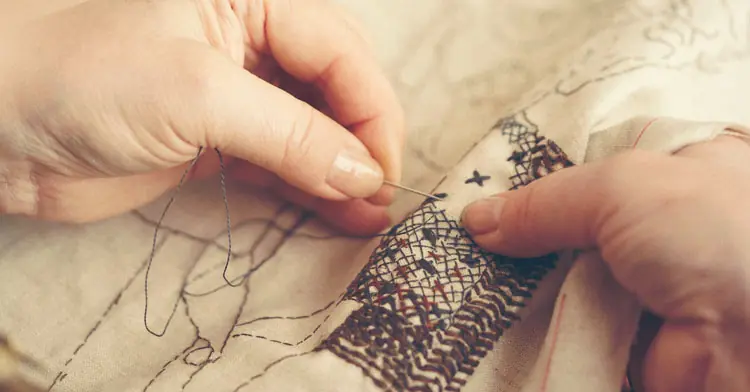
13 comments
Roz
Fascinating, entertaining, both beautiful and ugly at the same time. Her works intrigues, inspires and most importantly makes me feel empowered as a woman to say what I feel with textiles. Thank you
Carol Caron
Inspiring work. Oh to have her imagination!
jenn dempsey
wonderful. where will her work be shown in 2=25
Winnie van der Rijn
Hi Jenn! So far I have two shows on my schedule in 2025, one in Cambridge MA and one in Australia and two workshops- one in Cambridge MA and one in Minneapolis, MN- I update my website with shows and events regularly.
Krista
It will be wonderful if you can make it to Colorado
Winifred van der Rijn
I’ll see what I can do 🤗
Chris Kramer
Found Winnie’s work so provocative…It got my wheels turning…how could I express my emotions through my Art while inspiring others. Thank you.
Bonnie Capaul
Really wonderful , creative and full of raw emotion . Loved it! N
Phoebe
YES!
Baronio
Hilarious interview – thanks very much.
Margot
Fantastic!
Winifred van der Rijn
Thanks!
Karen
Great interview. Love your work!